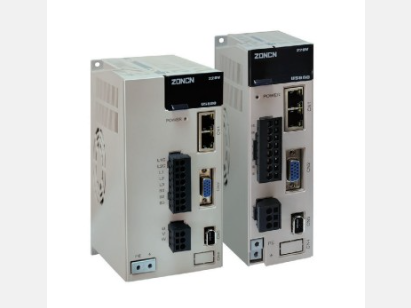
The frequency converter is an electric energy control device that uses the on-off function of power semiconductor devices to convert industrial frequency power into another frequency. The application field of the frequency converter covers many industries in the economy. Due to the advantages of high speed regulation accuracy, advanced technology, rich functions, high reliability, simple operation, and strong versatility, the frequency converter is superior to any previous speed regulation methods, such as pole-changing speed regulation, voltage regulation speed regulation, slip speed regulation, cascade speed regulation, commutator motor speed regulation, hydraulic coupling speed regulation, etc. Therefore, frequency converters are playing an important role in the power, public engineering, textile and chemical fiber, building materials, petroleum, chemical, food and beverage, tobacco, coal, mechanical processing and other industries.
The application fields of frequency converters are rich, and the main application fields of different types of frequency converters are different. High-voltage frequency converters are widely used in metallurgy, electricity, water supply, petroleum, chemical industry, coal and other fields. The application fields of medium-voltage frequency converters are similar to those of high-voltage frequency converters. In addition to being used in metallurgy, electricity, petrochemical and other industries, medium-voltage frequency converters can also be used for sewage treatment; the application fields of domestic low-voltage frequency converters are relatively scattered, and they have been widely used in elevators, lifting machinery, machine tools, textile machinery, air conditioning and other fields.
Lifting equipment in coal mines, such as hoists, bucket elevators and belt conveyors, usually need to drive high-power motors to lift and transport coal. High-voltage inverters can be used to control the motors of these lifting equipment to achieve precise control of speed and torque to improve the operating efficiency and safety of the equipment. In the process of coal processing, such as crushing, coal grinding and screening, various equipment such as crushers, coal grinding machines and screening machines are usually required. High-voltage inverters can be used to control the motors of these equipment, and adjust the speed and output of the equipment according to the processing technology and coal properties to improve processing efficiency and product quality. High-voltage inverters can also be applied to other areas of the coal industry, such as lifting equipment, coal gasification equipment, coal drying equipment, etc., to achieve energy efficiency and production efficiency improvement by precisely controlling the motors of the equipment. In large conveyor belt applications, precise torque control and automatic load balancing in multi-machine control are key. Inverters respond well to this demand.
The application of high-voltage inverters in the coal industry covers all aspects of the production and processing process. By accurately controlling the speed and torque of the motor, it can improve the operating efficiency of the equipment, reduce energy consumption, improve product quality, and help improve the safety and sustainability of mine production. As a complex electrical equipment, high-voltage inverters may have various failure risks, such as circuit failures and voltage instability, and need to be repaired and maintained in time to reduce downtime in production. Enterprises need to consider the advantages and disadvantages of this technology when adopting it.

